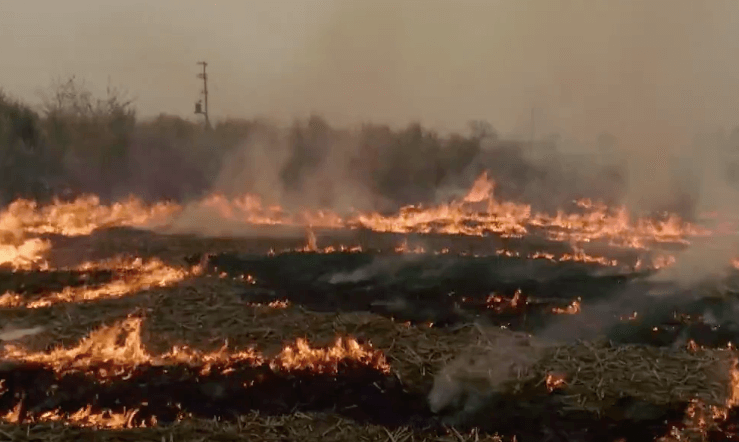
*Representational image, credit: letmebreathe.in
NASA's satellite imagery showed a large cluster of fires near Amritsar and Firozpur in Punjab and Patiala, Ambala and Kaithal in Haryana, causing air pollution in the national capital-Delhi.
According to the System of Air Quality and Weather Forecasting and Research, farm fires contributed 3 percent particulate matter to Delhi's PM2.5 concentration on Monday-Tuesday.
It is likely to be negligible for the next two days due to a change in the wind direction from northwesterly to southeasterly, the government agency said.
As it is on Tuesday and Wednesday morning, the maximum wind speed was 4 kilometers per hour, according to the India Meteorological Department.
Low temperatures and stagnant winds help in the accumulation of pollutants near the ground, affecting air quality.
With Delhi-NCR bracing for months of poor air quality, experts have warned that high levels of air pollution can aggravate the COVID-19 pandemic.
Severe air pollution in Delhi is a year-round problem, which can be attributed to unfavourable meteorological conditions, farm fires in neighbouring regions and local sources of pollution.
According to an analysis by the Council on Energy, Environment and Water, a Delhi-based think tank, transportation contribute the most -- 18 to 39 percent -- to Delhi's air pollution.
Road dust is the second-largest source of air pollution in the city (18 to 38 percent), followed by industries (2 to 29 percent), thermal power plants (3 to 11 percent) and construction (8 percent).
This year, the Delhi government has launched a massive anti-air pollution campaign -- Yuddh Pradushan Ke Viruddh' -- which is being led by Chief Minister Arvind Kejriwal and Environment Minister Gopal Rai.
A green war room with a 10-member expert team has been set up at the Delhi Secretariat to monitor the steps being taken to deal with high levels of air pollution in winters.